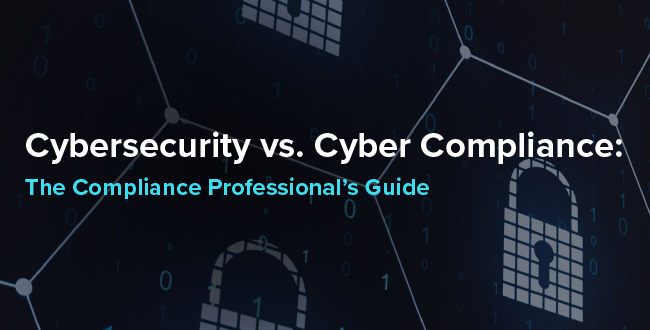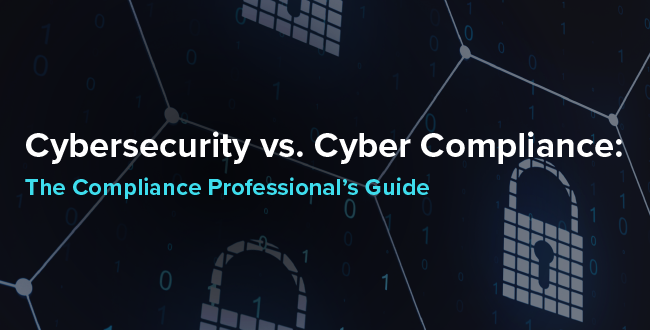This post was initially published by Smarsh.
Many people in the financial services industry understandably think “cybersecurity” and “cyber compliance” are interchangeable terms that mean the same thing. However, cybersecurity and cyber compliance are distinctly different and describe different — but equally important — concepts.
As regulators increasingly emphasize cybersecurity risk management, it’s important for firms to understand the differences.

Cybersecurity
Cybersecurity isn’t new — it’s been a major concern and frequent topic of discussion in the financial services industry for decades. Cybersecurity describes the controls that are in place to protect the IT infrastructure. This includes end-user devices, networks, cloud assets, applications and their business and customer data.
While this is a complex topic, cybersecurity largely falls under four key pillars:
- Strategy: The overall approach to the cybersecurity issue and how it aligns to the needs of the business and clients
- Technology: The identification and implementation of tools required to meet strategy objectives
- Management: The process to ensure security systems are maintained, up to date, and responsive to incidents
- Training and communication: The continuous process of training employees to recognize and communicate threats and attacks
However, cybersecurity isn’t just about securing internal data. It’s also recognizing third-party access to sensitive data. More than ever, firms are turning to partner vendors or third-party applications to maximize the value of their data. And having more access points means having more cyber risks.
Cyber compliance
Cyber compliance describes the aligning of cybersecurity systems to regulatory agency requirements. However, one of the biggest mistakes firms make is treating cyber compliance as a solely cybersecurity — or IT — issue.
Ensuring processes, procedures, reporting and recordkeeping are a part of your larger cybersecurity framework. While it’s true that IT leads cybersecurity initiatives, firms need to recognize that regulatory agencies are making cybersecurity a priority. Compliance and IT teams need to work together to prevent gaps in accountability.
Compliance teams play a critical role in demonstrating cyber and vendor risk compliance to board members and regulators, including:
- Reviewing policies and procedures against gaps
- Ensuring proper recordkeeping processes
- Completing and filing appropriate disclosures
- Reporting significant incidents
“Cybersecurity incidents can lead to significant financial, operational, legal, and reputational harm for advisers and funds. More importantly, they can lead to investor harm. The proposed rules and amendments are designed to enhance cybersecurity preparedness and could improve investor confidence in the resiliency of advisers and funds against cybersecurity threats and attacks.” — SEC Chair Gary Gensler Statement on the Proposed SEC Cybersecurity Rule
Knowing is half the battle
Regulators have made it clear that there will be no debate when it comes to data security. Firms have the fiduciary duty to apply practices that are in the best interest of their clients, including taking steps to minimize cybersecurity risks that could lead to significant business disruptions and harm to investors.
But knowing the difference between “cybersecurity” and “cyber compliance” is only half the battle. Get the guide, Cybersecurity vs. Cyber Compliance: The definitive guide for compliance professionals, to delve deeper into:
- Differentiating these terms and how they relate to your overall data management strategy
- Demonstrating to regulatory bodies that you have a proactive, continuous program in place
- Achieving and establishing a robust risk posture by using automated compliance review technologies





